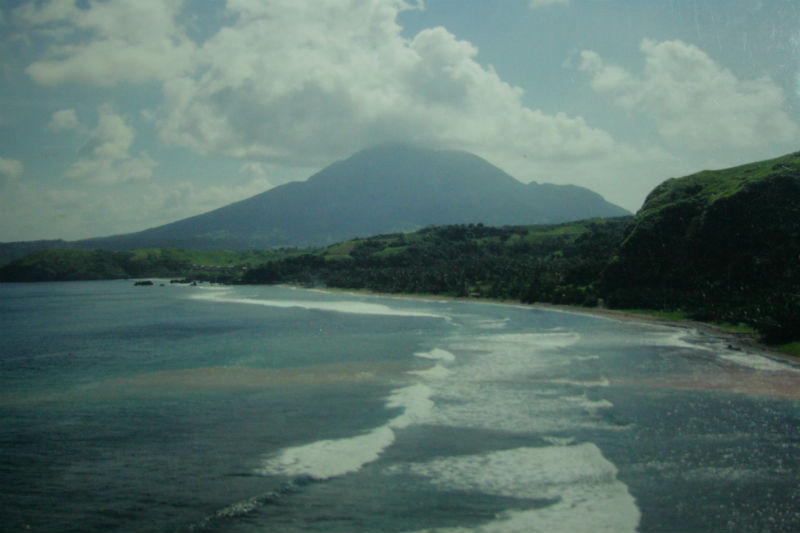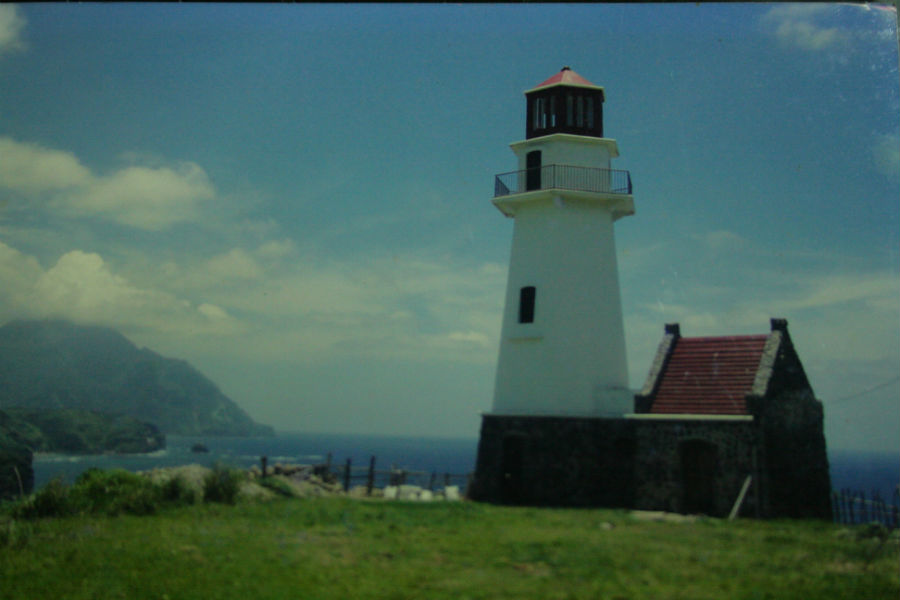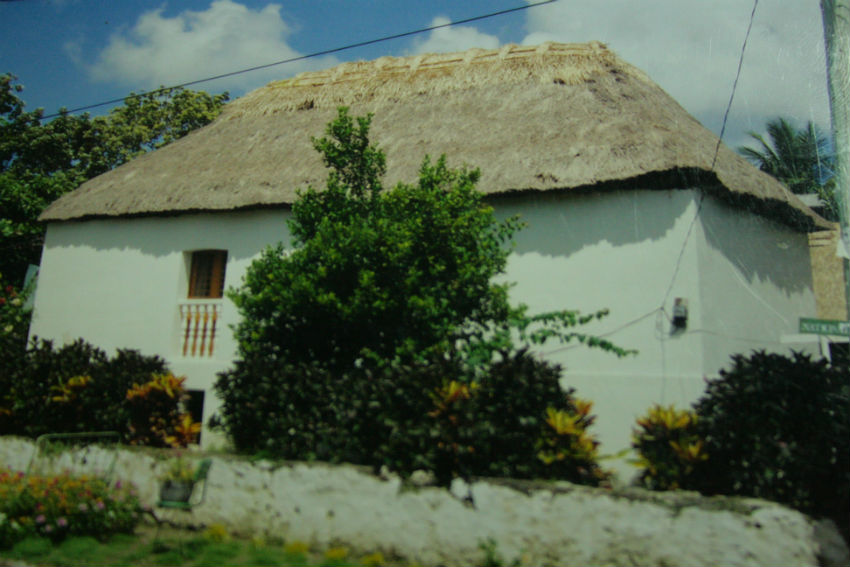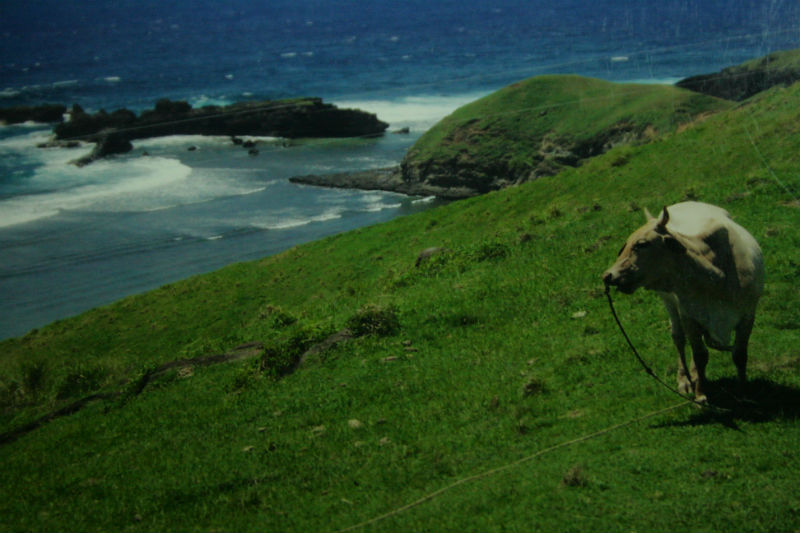Batanes Islands Tourist Spots For 2019
Intro by Dezza, 15 December 2018. Article written by Bruce Curran.
I haven’t been fortunate enough to visit the Batanes Islands just yet, but this is a very unique place that has always fascinated me and is gaining in popularity.
For the regular followers of my blogs, they will have heard me mention and feature my travel mentor Bruce Curran. Bruce has been to the Batanes Islands and it is with much pleasure that I feature his adventure there in this blog.
Bruce has a very unique writing style that is different from mine and he has some amazing travel experiences not just in the Philippines but all over the world.
So please take the time to read this guest blog so that you can learn more about this very unique place in the Philippines.

My good mate and travel mentor Bruce Curran. This man is an absolute legend and someone I have a heap of respect for.
Travel to Batanes Islands
The Batanes islands stand alone in the swirling waters of an isolated place. The people are honed over centuries from a close harmony with nature.
Closely woven grasses make up head and back coverings, as well as working waistcoats to ward off the rain. As the typhoon season gets properly underway from June, the living lifestyle becomes more resilient.
With the constant batterings of inclement weather and expectations of howling winds and driving rain, this is a necessity.
The balmy days of April and May with a short extension into June must be the best weeks to visit for outsiders determined to drop over the edge away from the vaults of modern living.
Next week it is my turn to dip, just for a very short while, into the rugged beauty of this isolated place. Photos and the written word, and the spoken word have finally catapulted me into action, while the weather window beckons.
In a week a flight from Manila at 6 am will whisk me across the Cordillera mountains, and over the sea to land at Basco. This place actually stands nearer to Taiwan than it does to the northern coast of Luzon.
It is also a place refined in the art of island living. This is where a close-knit community has savoured the rawness of harsh living since time began here for man thousands of years before.
These are treacherous waters fed by strong currents, where humpback whales breed, and where Captain Ahab from Moby Dick passed through in search of the great white whale.
The Yankee whalers of the nineteenth century refer to the waters east of the Batanes islands as good killing grounds for Sperm whales.
These baleen sifting mammals are usually found in groups of about 20 and can grow up to 60 feet long.
They are truly a spectacular sight when they leap into the air and breach, or when they slap the water with their enormous tale flukes. Ridley, green and hawksbill turtles utilize these waters.
The waters are brim-full of nature’s bounties.
Unique Wildlife On Batanes Islands
On land Jareck’s flying lizard and the Batan Narrow-disked gecko and the Batan smooth-scaled gecko are endemic species.
A rare species of flying fox lives here and tree-climbing coconut crabs are indigenous, while the grey-faced buzzards migrate through these lands on their way to warmer climes.
A striking yellow and white viper attracts some attention and is hunted here by enthusiasts for medicinal purposes. At night the elegant endemic Scops-Owls flit around Batan, Calayan and Sabtang islands in the group.
On the slopes of Mt Iraya, the 1200 metre high volcano on the northern face of Batan island, the Whistling Green-pigeon may be heard by those who know what they are listening for.

Mt. Iraya standing tall in the background with the rugged coastline in the foreground.
The human visitor may hike or bike across these rugged lands and soak up the rawness of a rugged land.
The Ivatan people with their own lingo meanwhile go about their farming chores, while fisherfolk use their local knowledge to choose the times to go to sea in their unique offshore boats known as falowa.
These are unique boats in the Philippine Islands, perfected over centuries of travelling over these formidable seas.
They are single-hulled vessels without the outriggers of the traditional bancas of most other islands in these lands. Outrigger boats would not handle such precarious, boisterous and often dangerous waters.
The Ivatans know that if they hear the sea eagles screech, they must suspect winds from the north, which are the most feared.
If they dream of tale fences, it is a warning that their boats will not mount the building seas on that particular day. Inshore they use the smaller tataya boats, some with sailcloth, which needs sheltered waters for proper boating.
All in all, it is nature and it’s weather that dictates the pace and pendulum of life in these islands. Typhoons are very much part and parcel of existence here, with as many as eight a year crunching through these parts.
On land, the Ivatans build their homes with this in mind, with metre-thick stone walls and a tightly packed low thatching technique that is aimed at surviving the onslaught of a typhoon’s coming, with its overwhelming power and relentless battering of powerful winds and lashing rains.
These are indeed a hardy people, who cooperate closely to overcome the trials and tribulations of routine danger in a rugged environment.
Ancient Heritage
The people have ancient links with Chinese, Japanese and Malay beginnings. Indigenous fortifications called Ijang are found on Batan and Sabtang islands.
One set of ruins is only replicated in Okinawa in Japan, and one North American professor claims to have traced part of the southern Japanese culture to roots in the Cordillera mountains in Luzon.
One way and another these are ancient people living on the fringe of a rapidly changing world.
One way or another it is time for me to start watching the weather charts on the website ‘typhoon 2000’, and for me to begin hoping that out their a thousand miles to the south-east of the Batanes islands all remain calm.
However, this part of the Pacific Ocean at this time of the year is an unpredictable place, and nature habitually likes to stir up the typhoon broth which cast shadows of intent along the Philippine coastline.
It is the Ivatan people of the Batanes who know best how to cope with this fury and onslaught. It is they who have been honed over centuries to cope with these offerings of nature.
Typhoons must ultimately rule the roost, but I sit here in Manila with its partly cloudy skies anxiously watching for signs, but not yet dreaming of tale fences, and unhearing of the screeching of the sea eagles.
I hope beyond hope that the skies remain clear, and I may take to the skies for the two-hour flight to the heart of an ancient land, where nature has always been king.
Reflections on Batanes Islands
On the hillside above the town, the light brown cow stood its ground silhouetted against a clear blue sky.
The communal pasture grounds roll down dale and over copse, stunningly beautiful and green, in parts visible all the way to the base of the volcano that has supposedly sat dormant since before the birth of Christ.
Mount Iraya dominates the backdrop to the landscape, but the eye is caught by the raw and gentle pastel coloured foreground of the feeding grounds for the island cattle.
Newly appointed and freshly whitewashed with pleasant symmetry stands the red-capped lighthouse, high on a hilltop amid the pastures, facing towards the east, the mariner’s night eyes add their sense of wellbeing to a warming pastoral scene.
Along the eastern shoreline of Batan island, the continuous line of rolling breakers paints a distant line of effervescing whiteness.
A crag of dark black rocks here and there break up the onrushing seawater, as it sizzles to the stony beachfront before tumbling into backward motion within the drag of a spent force.

The Tayid Lighthouse of Mahatao, overlooking the Philippine Sea, is one of the main features of the Batanes Islands
A long large white cloud encompasses the peak of the distant volcano, while its slopes betray a thick forest line of dark green trees.
The jigsaw of vision pieces together a stunning neatness displayed within the simplicity of a contented community. The streets within Basco town itself are more or less empty.
The impression is of the sighting of an occasional person every now and then, with a small bike or two, and a rare four-wheel vehicle.
The whole place after all only houses less than 6000 people, and only a handful are out and about.
There is no large shop to be seen anywhere, and a multitude of sari-sari stores built as extensions to homesteads, are open for trade manned by one household member who hovers on the brink of some simple activity.
The town radio is on the air; even black north American rap music has penetrated to these isolated parts of the country.
Heavy metal rap songs spawned from the trauma of urban living and gangland lifestyles seems amusingly incongruous blasting out into neat little roadways in an island town where crime is perhaps something you only hear about in school.
Fishing Villages Around Batanes Islands
The waterfront has some activity where a concrete pier acts as the umbilical cord for the small home-town fishing fleet.
A few ‘falowa’ monohulls, unique in these parts, lie bobbing, while others sit on the dark sand already dragged clear of the water’s edge.
One boat has five boatmen sorting nylon fishing nets and preparing the boat for the afternoon’s sortie. A few small children of walking age mull around, observing and helping where they can.
They are all boys on their way to becoming fisherfolk in their own right. On the ramp lie boats in various states of disrepair, stacked casually in the sun as if abandoned till cooler weather will allow a fruitful workload.
Two traditional Luzon mainland outrigger bancas lay in working order, although they seemed out of place in these parts.
They were colourfully painted in the usual tradition of smaller coastal bancas and had evidently carved their own place in these waters.
There was no evidence of any commercial fishing fleet, only a line of rowboats, although one or two had motors aboard. This was fishing for the next meal, and no fish market seemed to exist at all.
Occasionally along the coastal road, a line of drying fish, browning in the sun, hung flat and open, salty and knurled. Life all seemed to be about planning for the day on hand, and perhaps the next day.
Houses That Are Built To Last
The houses, on the other hand, are planned for the worst of weather, which regularly passes through these islands in the form of typhoons.
Thick stonewalls with limestone mortar with compact windows stood braced for the next onslaught, with window fittings for boarding against the violent impact of superwinds.
These at least are the old-style Ivatan houses. In this changing age, concrete houses, without the same character are springing up all around.
It is an ugly median at the best of times, and the charm and taste of the Ivatan houses are accentuated by the birth of many of these new monstrosities.

The stone houses of the Batanes Islands are built to withstand the elements
A stone house takes a lot of stone-gathering and preparation, but the speed of concrete takes little time and seems to cast care and aesthetics to the wind.
The creeping modernity is a show of wealth to some, and no doubt increases interior convenience and facilities, but the exterior styling often leaves a lot to be desired.
A few have used concrete and replicated the old house styles with new materials, and these fit well into the images borrowed from the past.
These changes are well in evidence in the coastal towns on Batan island itself, but the other inhabited islands, like Sabtang and Itbayat, have so far mostly avoided this onslaught, and therefore remain cultured, quaint and steeped in tradition.
The Rolling Green Hills Of Batanes Islands
The communal pasturelands roll up and down to the far horizon along the central spur of Batan island. Brown cows everywhere to be seen chewing the cud and grazing the days away.
Thoughts of fresh milk and Batanes cheese played on my mind as we regained the town limits.
These staple dairy products must be a blessing in such remote lands, often cut off from any transport communications due to bad weather.
I found a little shop and asked for local fresh Batanes milk. The counter attendant looked at me askew and I realized she didn’t quite perhaps understand my brand of English.
“Fresh milk?” I smiled.
Out came a carton of Luzon milk.
“No thank you, Batanes milk please, from some of these hundreds of cows all over your beautiful island!”
She shook her head and pouted her lips, “No milk here”
“Ok, where do I get it?”
“No milk here”.
It finally dawned on me, they don’t milk their cows at all. I burst out in a disbelieving kind of a cackle. I could not quite get my head around this one laid out before me in a foreign land. My alien mind was totally befuddled.
To me, a being from a dairy upbringing in European lands, this was beyond my understanding. I stammered unwittingly, “But cows without milk is like having cars without wheels”.
The silent stare told me their story, and I lowered my eyed realizing I have a habit of blurting out incongruous analogies.
Needless to say, we ate a lot of beef during our stay, and I pondered much on this strange predicament, wondering if a delegation from Switzerland shouldn’t be dispatched to the Batanes Islands.
At least they could tell them a thing or two about cows.

No milk here sir! This cow doesn’t seem too bothered about it.
Batanes Food
One other occurrence initially befuddled me on these islands that are surrounded by open seas.
I was enjoying my first fresh fish and commented on how lucky these islanders were to have access to such an abundance of seas, only to be told that I was eating a freshwater Bangus.
It wasn’t till my sixth meal that I actually managed to secure a fish from the sea.
I found this rather mysterious until I recalled there is no fish market, and all families more or less fend and fish for themselves, and there is no such thing as a commercial fishing fleet.
Then it all dawned on me, these are lands of plenty, where the weather may be harsh but the living is easy. This was the essence of the Batanes magic, where life is but a simple daily routine.
Any change in the patterns of life is provided by the weather gods, who often swipe the Ivatans with severe forces of nature. Where is the Batanes Islands? Check out the Batanes map here.
BATANES ISLANDS FAST FACTS:
Google Maps: Batanes Islands
Skyjet and Cebu Pacific fly to Basco from Manila daily with the flight taking just over an hour. Philippines Airlines (PAL) fly twice weekly to Basco from Clark.
You can walk around Basco as it is a reasonably small town. However, if you wish to explore more, you can hire a tricycle or scooter. Sabtang Island is also a recommended destination and reachable by boat in less than an hour.
Related Videos:
Please check out the related articles below. Feel free to share this article with family and friends and also join the conversation below!
Related Articles:
Top 10 Tourist Spots In North Luzon
The Ultimate North Luzon Road Trip
15 Reasons Why The Philippines Is The Best Country In South East Asia


